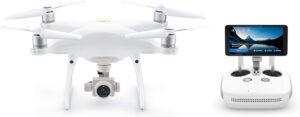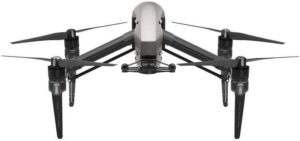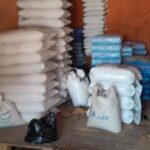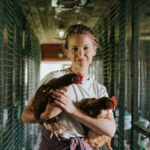Some links on this page may contain affiliate links which means that, if you choose to make a purchase using the link, Agricfy.com may earn a small commission at no extra cost to you. For more information, go to our Affiliate Disclosure Page!
Introduction
Looking for the best drones for agriculture? You’ll find out in a bit.
- Introduction
- At a Glance: Best Drones For Agriculture
- Drones: Overview and Benefits for Agriculture Use
The idea of using drones for agricultural purposes is becoming more prominent in the industry.
From crop/livestock management to planting and seeding and farm security.
There are numerous ways drones can be used in agriculture.
And as technology advances, we can expect drones to play a vital role in optimizing agricultural practices.
Consequently, this will enhance productivity and promote sustainable farming methods.
So, if you are ready to enhance your farming practices with this technology and are wondering which drones are best for agriculture, I’ll recommend the Autel EVO II Dual Camera System Drone.
I shortlisted and reviewed the 5 best agricultural drones in this post, highlighting their unique features, benefits, and drawbacks.
All the information you need to make a good buying decision and get sufficient value for your money has been provided.
You just have to read through to get the answers to your questions.
At a Glance: Best Drones For Agriculture
| S/N | Product Name | My Rating |
| 1. | Autel EVO II | Best for High-Quality Thermal Imaging |
| 2. | DJI Phantom 4 Pro V2.0 | Best for Crop/Livestock Inspection & Management |
| 3. | DJI Inspire 2 | Versatile drone for agriculture |
| 4. | E416P Folding Quadcopter | Best-Budget Drone for Agricultural Spraying |
| 5. | Sanmoo Drone | Best Industrial Drone for Agricultural Spraying |
Drones: Overview and Benefits for Agriculture Use
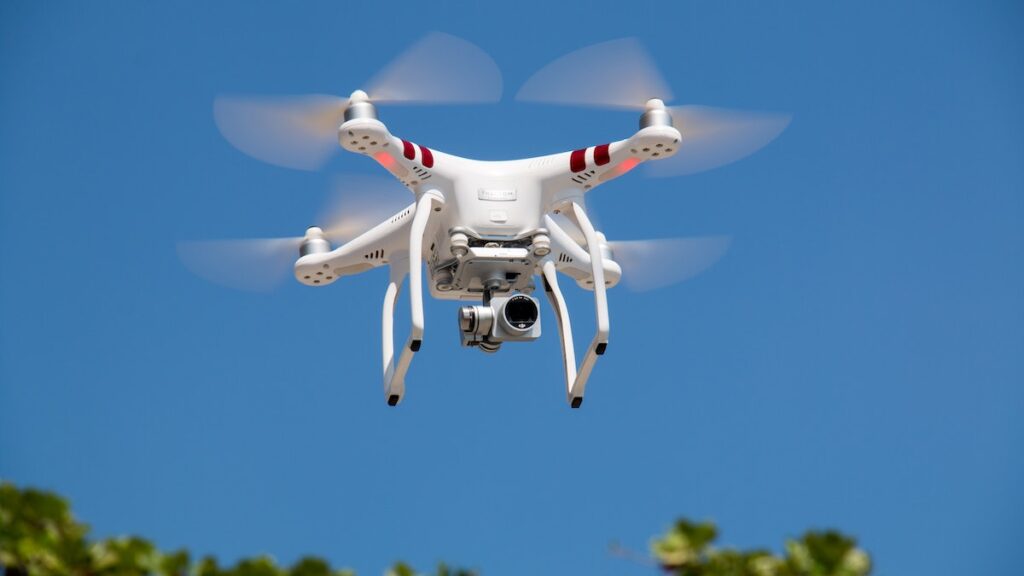
Aerial unmanned vehicles (UAVs) or drones are popular in various industries, including agriculture.
They are remotely controlled devices and are available in various sizes, from portable handheld devices to large structures like aircraft.
Furthermore, they’re equipped with sensors, cameras, and GPS, among other technologies, enabling them to perform various functions, including streamlining agricultural processes.
Speaking of agriculture, drones are beneficial for agriculture in many ways.
Some of the main benefits of drones for agricultural use include;
i. Time Saving and Improved Efficiency
Drones can save you time and improve the efficiency of your agricultural activities.
For instance, you can quickly inspect a large piece of land with a drone.
This task usually takes hours to complete if you have a large piece of land.
It’s even more time-consuming if you work alone.
Perhaps you haven’t been able to get the right employees for your farm.
That said, drones can speed up tedious and time-consuming tasks like these, allowing you to channel the rest of your time to other tasks.
This also means you can quickly gather relevant information, and fix issues promptly.
As a result, improving efficiency in your farming operations.
ii. Precision Agriculture
Drones have sensors and cameras that allow you to survey your farmland or property and spot specific areas with issues.
With this information, you can make precise decisions and focus on issues that need specific solutions.
In a nutshell, it helps eliminate guesswork and misguided decision-making in your agricultural practices.
iii. Enhanced Crop Health and Yield
One of the applications of drones in agriculture is crop health assessment.
By assessing crop health, you can identify crops lacking enough nutrients or infected by diseases and bugs early on.
By promptly recognizing and solving these problems, you can make your crops healthier and improve crop yield.
iv. Promotes Cost-Efficient Practices
Drones help reduce the need for manual labor, which often increases cooperation costs.
Specifically, by replacing manual field inspection with drones, you can save time and cut labor costs to a great extent.
The bottom line, drones offer many benefits to the agricultural industry.
Farmers can streamline operations by harnessing these benefits to optimize productivity and profitability.
Best Drones For Agriculture
1. Autel EVO II: Overall Best Drone For Agriculture
This versatile drone is designed for various professional applications across various industries.
It can be applied to public safety, infrastructure inspections, and aerial surveying.
Consequently, it is one of the best agricultural drones for livestock/crop monitoring, land mapping, and other related activities.
The first impressive thing about this drone is its dual camera system.
It features a thermal imaging sensor with a resolution of up to 640 x 512 at 30fps.
It also has an 8K camera for capturing high-resolution still images and videos.
This means precise and accurate insights from your aerial surveying activity, leading you to make informed decisions.
Likewise, it features a versatile payload system, allowing you to incorporate additional accessories, depending on your task.
The Autel EVO II has an impressive coverage range of 13 kilometers and a flight speed of 45 mph.
This will save you time and allow you to cover large areas in a single flight.
In addition, it has a 7100mAh rechargeable battery that delivers a flight time of up to 42 minutes.
Then, the charging time for the battery is 90 minutes.
Together, these features can increase your efficiency and productivity in your agricultural tasks.
Finally, it has an impressive 7.9-inch bright-lit remote controller display for high-quality visual feedback.
Upsides
i. 360-degree obstacle avoidance feature
ii. GPS functionality provides real-time data and location
iii. Multiple temperature modes
iv. Sturdy design with wind-resistant features
v. Versatile use cases
Downsides
i. For professionals/experienced users
ii. Third-party payload limitations (check compatibility with desired payloads)
Despite these minimal limitations, the Autel EVO II stands out as the best drone for agriculture.
It enhances precision agriculture by giving you accurate and detailed data to make well-informed decisions.
2. DJI Phantom 4 Pro V2.0
With the DJI Phantom 4 Pro V2, you can get professional-grade aerial shots of your farm/field.
One excellent feature of this drone is its camera, which has a 20-megapixel capacity and a 1-inch CMOS sensor.
This can capture high-quality still images and record 4K videos at 60 fps (frames per second).
This will ensure you get detailed visual data and insights for effective analysis, assessment, and decision-making.
Another feature worth noting is its transmission range of up to 8km and flight speed of up to 72km per hour.
This will allow you to efficiently survey large fields and collect data in as little time as possible.
The DJI Phantom 4 Pro V2 has a 5870mAh battery, offering an extended flight time of up to 30 minutes.
Similarly, rechargeable batteries require less than 2 hours, giving quick turnaround times.
Lastly, it has a responsive remote controller with a 5.5-inch LCD, offering clear visual feedback even in direct sunlight.
Upsides
i. Excellent camera quality.
ii. Long flight time.
iii. Obstacle sensors.
iv. Multiple flight modes.
v. Sturdy and lightweight design.
Downsides
i. Does not support payload
ii. Limited upgrade options
iii. Batteries are not included.
In conclusion, the DJI Phantom 4 Pro V2 stands out as one of the best drones for agriculture.
Despite being a video/photography drone, it’s suitable for agricultural activities like crop/livestock inspection and management.
3. DJI Inspire 2
The DJI Inspire 2 is another efficient device offering precise aerial imaging solutions.
This drone has an impressive flight speed of 58 mph, allowing for speedy coverage of large areas.
Furthermore, the dual battery system offers an extended flight time of up to 30 minutes.
Likewise, recharging both batteries takes about 90 minutes, giving you a quick turnaround time.
In addition, the DJI Inspire 2 comes with a dedicated FPV (first-person view) camera, giving you a clear view of the environment while controlling the flight.
It’s also compatible with 5.2K gimbal cameras and a payload system that can accommodate accessories like thermal sensors or zoom cameras.
Upsides
i. High-quality imaging
ii. Obstacle-sensing features are available.
iii. Intelligent flight modes.
iv. Versatile payload options.
Downsides
i. Large and heavy.
ii. Need expert skills to handle.
iii. Doesn’t come with a high-quality camera.
Besides these downsides, the DJI Inspire 2 is one of the best drones for agriculture.
It’s great for field mapping, monitoring crops and livestock, estimating crop yields, and detecting diseases and pests.
4. E416P Folding Quadcopter
This is one of the best drones for heavy-duty tasks in agriculture.
Agricultural tasks like spraying/pesticide application are power-hungry tasks that require an equally powerful device.
Fortunately, the E416P Folding Quadcopter has enough power to meet your needs.
Firstly, it has a payload capacity of 16kg to accommodate liquids such as pesticides or fertilizers.
Also, its foldable design allows for easy storage and transportation.
The E416P folding quadcopter is equipped with the Hobbywing X9 / T10 power system for high performance.
Hobbywing is one of the leading power system manufacturers, so you can expect high functionality from this drone.
With the recommended 22,000 mAh battery, you’ll enjoy up to 20 minutes of flight time with this drone.
Upsides
i. Efficient for precise spraying
ii. Efficient power system
iii. IP67 Waterproof protection
iv. Great payload capacity
v. One-key takeoff and landing feature
vi. Sturdy frame and durable design
Downsides
i. Skills and training required to operate
ii. Heavyweight
iii. Flight speed not specified
Despite these downsides, the E416P Folding Quadcopter qualifies as one of the best drones for agriculture.
It is specifically designed to enhance precision and efficiency in agricultural spraying.
5. Sanmoo Drone

First, this drone has an impressive payload capacity of 25 liters to accommodate a significant amount of spray or other types of equipment.
Furthermore, the Hobbywing X9 Power System powers this drone’s motors, enhancing flight performance.
Regarding your spraying activity, this drone gives you a minimum flight time of up to 10 minutes at a speed of 0.10m/s.
Finally, the JIYI K++ Flight Control system ensures stability and responsiveness during your agricultural operations.
Upsides
i. Precise flight control system
ii. Excellent power system
iii. Autonomous take-off/landing
iv. Automatic breakpoint continuous spraying feature
v. Multiple flight modes
vi. Sturdy frame and durable design
Downsides
i. Short flight time
ii. Requires additional investment for spray drone kit.
Notwithstanding its downsides, this drone is efficient for agricultural activities like spraying.
Hence, it’s worth considering investing in it.
Buying Guide: Things to Consider When Choosing Drones for Agricultural Use
Your Needs
It’s important to consider your unique needs when choosing agriculture drones for your business.
This will ensure you get the best one that will offer the most value to you.
The common uses of agriculture drones include spraying/watering, aerial surveillance, inspection, crop monitoring, planting & seeding, pollination, etc.
So, think about what tasks you’d want to use the drones for.
Also, consider the size of your land.
By considering your specific needs, you can ensure you get one that’ll serve you the most.
Flight Speed and Coverage Area
Flight speed determines how fast the drone will cover a specific area.
A higher flight speed means you can cover a large area in the shortest time possible, and vice versa.
Higher flight speeds can be beneficial if you have vast land to cover.
However, you’d want to strike a balance, as something too fast may not be able to capture detailed data and give precise calculations.
The coverage area, on the other hand, is the size of the area the drone can cover in a single flight.
To determine your ideal flight speed and coverage area, refer to the requirements of the specific agricultural tasks for which you intend to use the drone.
For instance, some tasks like spraying and seeding may require faster flight speeds to cover a large area quickly.
However, tasks like imaging, crop monitoring, and ariel surveillance may require slower speeds to enable you to capture important details.
The key is finding one that balances optimal speed and coverage area.
Altogether, these factors can determine how effective and efficient the drone will be for agricultural tasks.
Battery Capacity/Flight Time
This determines if the drone has enough power to sustain itself in the air for a considerable time before needing a recharge.
Hence, stronger battery capacity equals longer flight duration and extended usage without interruptions.
In a nutshell, for efficient operations, aim for a drone offering a flight time of at least 20-30 minutes.
Charging Time
You should look out for drones with fast charging times.
Longer charging times will result in longer downtimes and slow your work progress.
To ensure efficient charging, it’s important to aim for a maximum charging time of 1-2 hours.
This will minimize downtime and ensure maximum productivity.
However, bear in mind that factors such as drone size and battery technology can influence battery capacity and charging time.
Camera and Sensor Quality
High-quality cameras and sensors will ensure clear imagery data collection, leading to more precise insights and better decision-making.
Ideally, a drone with a camera quality of 12 megapixels or higher and image stabilization features will result in clean, clear, and crisp images.
For sensors, aim for drones with high-quality sensors that can capture extra details that may not be visible to human eyes.
In other words, with the right sensors, you can quickly detect issues like plant health and infected plants.
Multispectral or hyperspectral sensors are best suited for agricultural purposes.
Overall, good-quality cameras and sensors are essential for getting accurate insights.
So, look out for this when choosing drones for agricultural use.
Payload Capacity
This determines the weight of the drone’s load while maintaining stability and performance.
In addition to cameras and sensors, agricultural drones may also contain pesticides or fertilizers, depending on the tasks you want to perform.
For instance, drones for aerial surveying and mapping will carry a lightweight load, such as a camera and a sensor.
However, spraying drones will have their tanks filled with pesticides or fertilizer.
So, depending on the tasks you want to use the drone for, aim for agricultural drones with a payload capacity suited for that purpose.
Design & Build Quality
Due to the nature of agricultural tasks, you need a sturdy and durable device.
Specifically, you need something that can withstand outdoor conditions while maintaining performance reliability.
Aim for a device designed with durable materials, reinforced frames, and custom-built to withstand agricultural operations.
Available Technologies
You should choose an agricultural drone with additional or advanced technologies like GPS, mapping, real-time data transmission, and data processing integrations.
With these, you can maximize the benefits you’ll enjoy from your agricultural drones.
Control & Maintenance
Conversant with the saying less is more?
Well, this saying holds in this context.
While you may want an agricultural drone with the most advanced features and technologies, you should aim for something easy to control and maneuver.
This is true, especially if you’re new to using drones for agricultural tasks.
You can get more sophisticated systems as you become more familiar with this terrain.
Maintenance is another factor to consider.
Drones require regular maintenance to remain in good condition for effective operations.
The bottom line, go for drones that are easy to control and maintain.
The important features or factors to consider when choosing a drone for agricultural use may vary depending on your tasks.
Notwithstanding, this can serve as your checklist for getting the best drone to give you sufficient value for your money.
Drone Applications in Agriculture
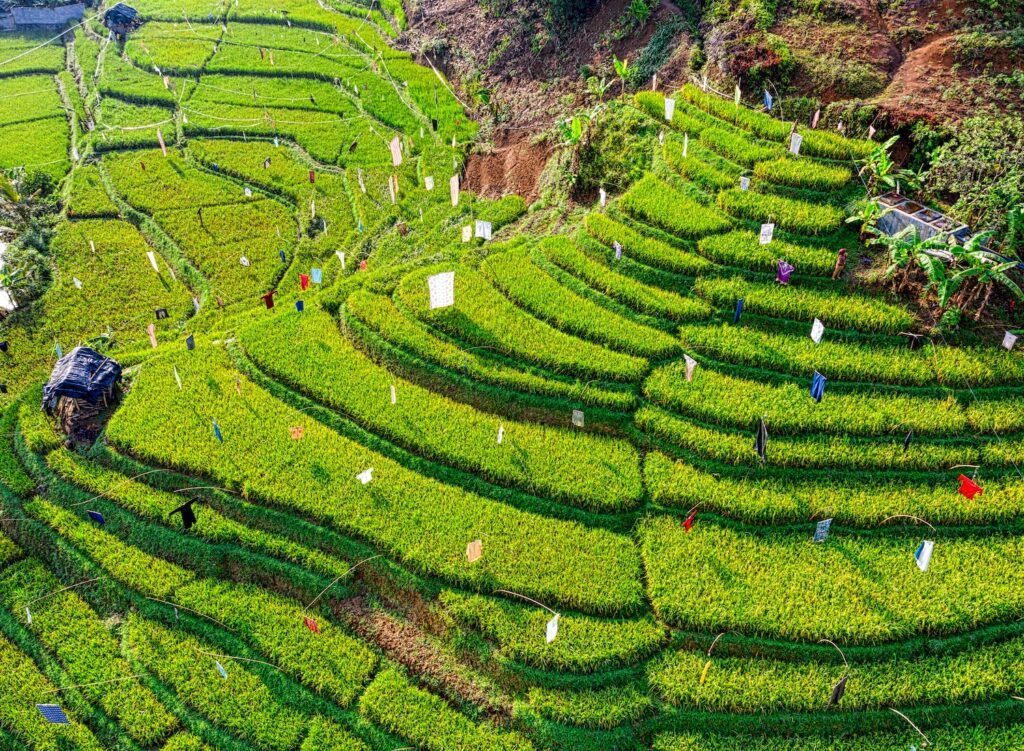
Crop Monitoring and Management
Drones are useful for monitoring and managing crops.
They come equipped with cameras and sensors that can be used to conduct an aerial inspection and inventory assessment.
Consequently, providing farmers and agronomists with relevant insights to make data-driven decisions.
Crop Health Assessment
Drones can be used to detect nutrient deficiencies, diseases, and pest infections in crops.
You can use the drone’s cameras and sensors to identify crops with issues and tackle them early on.
Furthermore, drones can be used to apply fertilizer and pesticides directly to problem areas.
In summary, drones make it easy to assess crop health and apply precise solutions.
Livestock Management
There are so many ways drones can be used to facilitate livestock management.
These include herd monitoring, grazing and pasture path assessment, infrastructure inspection, search and rescue, environmental monitoring, and security.
Ultimately, drones provide an efficient and optimal way to manage, monitor, and protect your livestock.
Irrigation Management
This is another common application of drones in agriculture.
It can be used to inspect and identify damaged components of an irrigation system.
Drones with thermal and infrared sensors can help farmers spot areas with excessive moisture, leaks, or inadequate irrigation.
Overall, effective irrigation is essential for maximum crop productivity.
Therefore, you can optimize crop yield by applying drones to your irrigation management practices.
Land Surveying and Mapping
Drones are built to quickly cover a vast land area while providing accurate data and insights.
This makes them great for land surveying and mapping.
Land surveying and mapping are essential to determining the capacity and boundaries of your farmland to enable effective planning and management.
So, drones can ensure farmers get accurate and detailed insights from this activity.
Crop Yield Estimation
Drones can also help farmers monitor and capture real-time data throughout the planting season.
This promotes effective crop management and, ultimately, accurate crop yield estimation.
Spraying
Most drones have payload systems that accommodate payloads like pesticides, herbicides, or fertilizers.
These drones can ensure precise and targeted applications, especially in hard-to-reach areas.
Consequently, this leads to an efficient agricultural practice.
Environmental Monitoring
Finally, drones can be applied to environmental monitoring.
It can be used to inspect hard-to-reach areas and cover vast land quickly.
The insights gathered from this activity can be used to make informed decisions and conduct effective planning and management.
Overall, the agriculture drone market is projected to exceed $13 billion by 2030.
This rapid growth rate suggests a demand for more efficient agricultural practices to cope with the growing global need for food production.
As such, the application of drones in agricultural practices cannot be overstated.
Conclusion
Drones have proven to be valuable in agriculture.
These devices allow farmers and agronomists to streamline operations, increase efficiency, and maximize profitability.
However, to truly reap these benefits, you need to get the best drone suited for your specific needs.
Fortunately, you have now discovered the five best drones for agriculture, with the overall best being the Autel EVO II Dual Camera System Drone.
Above all, consider your unique needs and opt for the one that best suits them.
FAQs
How many acres can a drone spray?
Depending on the drone’s battery life, which typically ranges from 20-30 minutes, some drones can spray up to 40 acres per hour.
Can drones fly in the rain?
Generally, drones are not meant to be flown in the rain.
This is because water can easily damage the motor and other electric components.
Although some drones may have waterproof compartments.
However, it’s best to fly your drone under clear skies to be safe.
What time is best for drones?
The best time to fly drones will be during the day.
This is good for optimal visibility and safety and to ensure you capture accurate data for your analysis.
Plus, regulatory requirements in different locations may have strict regulations that only permit you to fly drones during daylight.


